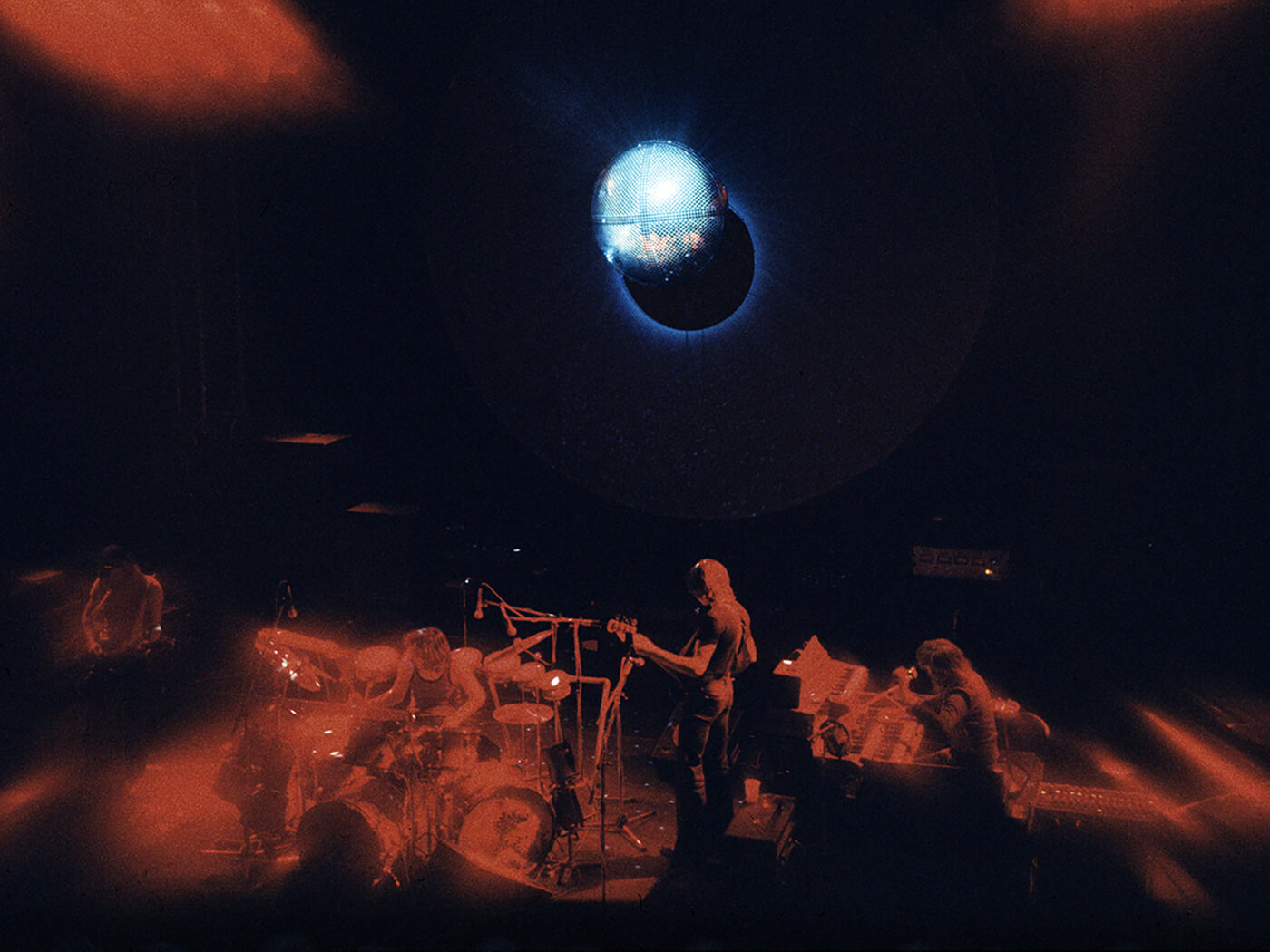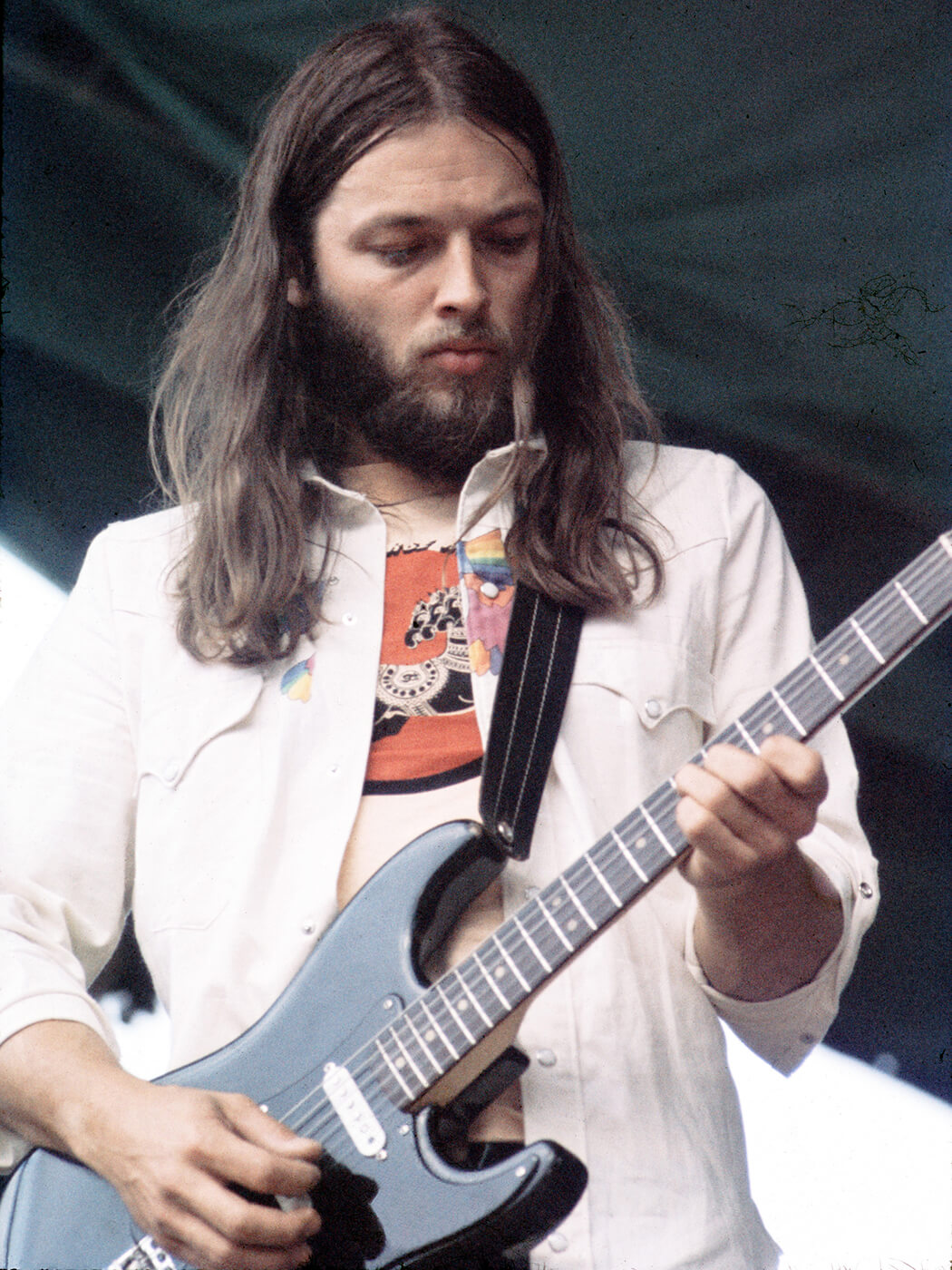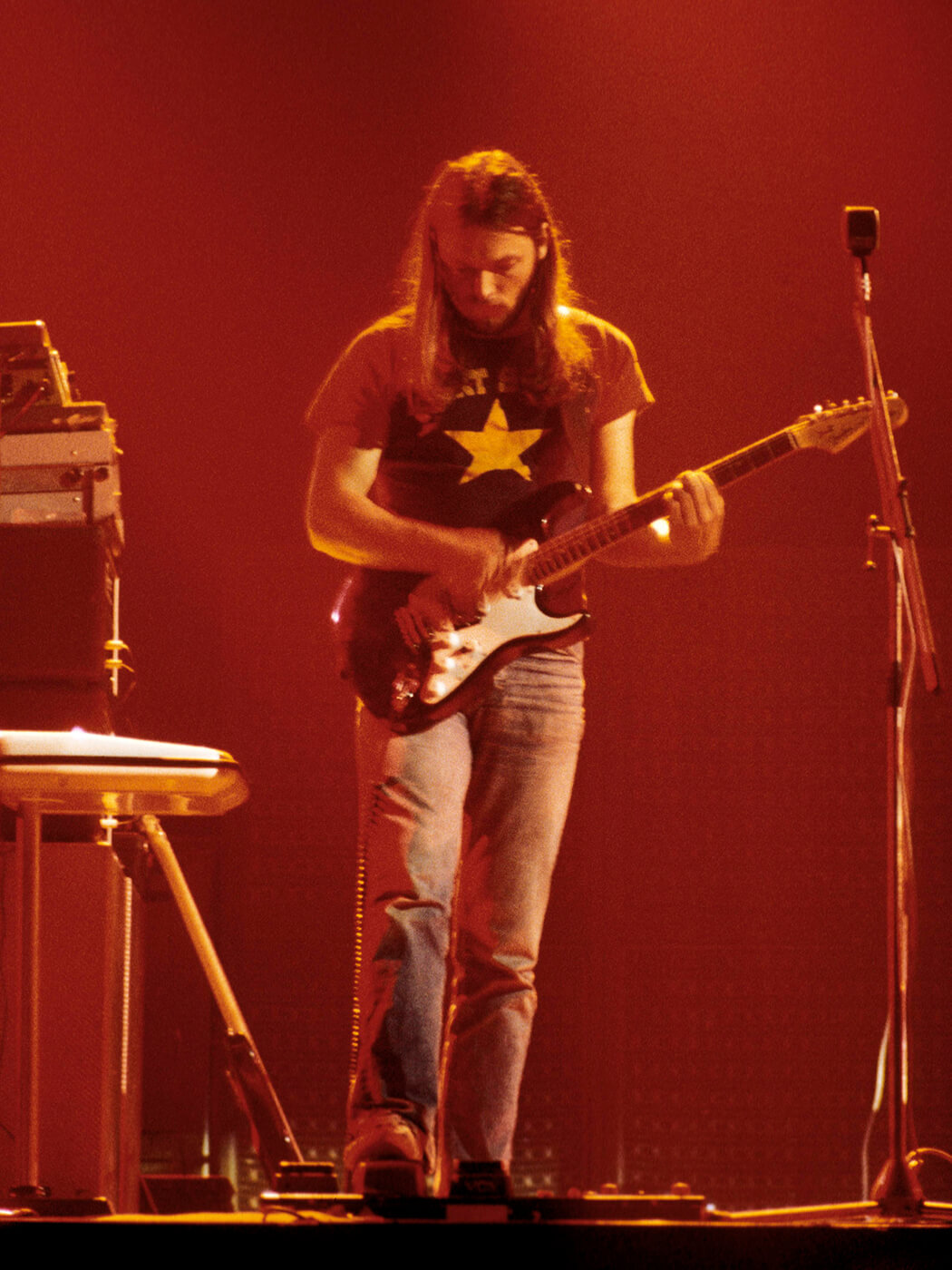Related Tags
The Gear Used By David Gilmour on Pink Floyd’s Dark Side of the Moon
It’s one of the most iconic guitar albums of all time, with tone that is still held as a benchmark for many – but what was Gilmour using to create it?

Pink Floyd performing live in 1973, photo courtesy of the National Archives. Image: Smith Collection/Gado via Getty Images
Pink Floyd’s masterpiece, Dark Side of the Moon was recorded at the famous EMI Studios (now better known to the world as Abbey Road Studios). The recording process for what would become Floyd’s eighth album took place during two sessions between May 1972 and February 1973.
Pink Floyd were assisted in the studio by staff engineer, Alan Parsons, who had worked as assistant tape operator on Floyd’s fifth LP, Atom Heart Mother, 1970. Of course, Parsons also famously served as an engineer on The Beatles’ final two studio albums, Abbey Road and Let It Be.
Parsons was essential in helping the band navigate some of the technological advancements that had been developed since the recording of their previous albums. The studio was now capable of mixing 16 tracks at a time, which was double what they had previously been using. In fact, the upgraded studio equipment was a big part of the reason Pink Floyd returned to EMI this time.
Still, for the recording of Dark Side of The Moon they would end up using more than 16 tracks on most songs, which required several tracks being combined into one. Some songs, like On The Run, required six people’s hands to be on the mixing board at once. Other songs like Speak To Me were somewhat of a compilation of recordings, an early example of what is essentially sampling. The song was so titled because when the vocalists were in the booth to record their parts, Parsons would cue them to talk by saying “Speak to me”.
The album is perhaps most feted for the impossibly influential guitar work by David Gilmour – DG was a well-respected guitarist by this point in his career of course, but Dark Side… would see him elevate things to a new level, and become a benchmark guitar tone for millions.

The guitars used on Dark Side of the Moon
Gilmour’s guitar of choice for this album was his famous late-’60s “Black Strat”, the very same one that would sell for a staggering $3,975,000 in 2019. That Strat went through a lot of changes over the years. During the recording of Dark Side of The Moon, he had already made a few minor mods to the guitar. Perhaps most significantly, the original maple neck was swapped out for a ’63 neck with rosewood fretboard. The wiring was also altered a bit to include an extra pickup-selector switch for a neck/bridge combination or to use all three pickups at the same time.
There was another electric guitar that was used on the album as well. Back in 1970, while on tour in Canada, Gilmour visited a guitar shop belonging to luthier Bill Lewis and tried out one of his guitars. He ordered a guitar and received it later that month and immediately began using it for live gigs. It was used in the studio for the solo on the song Echoes which appeared on the band’s 1971 release Meddle. This time around, it was used for part of the solo on Money during the recording of Dark Side of The Moon.
The guitar offered some versatility that his Strat couldn’t offer, even with its mods. It had 24 frets spanning two full octaves which allowed Gilmour to reach higher notes than he would have with a conventional Stratocaster. It also featured humbuckers which offered a bit of a tonal variance to the single-coiled Strat. Gilmour is believed to still own the Bill Lewis guitar, as it was not part of his massive gear auction in 2019.
Gilmour also used a Fender 1000 Twin Neck Pedal Steel tuned to Open G to record the slide guitar on Breathe and The Great Gig In The Sky. Interestingly enough, Dark Side of The Moon – as far as archivists and historians are aware – does not feature any acoustic guitar.

Pedals used on Dark Side of the Moon
Gilmour has always been an effects trailblazer, and for the tours that followed the release of the album Gilmour had a self-contained pedalboard built, but during the recording, he was using pedals as stand-alone units. Based on photographic evidence, we know he had a Dallas Arbiter Fuzz Face, a Colorsound Power Boost, Univox Uni-Vibe, a Binson Echorec II, Kepex processor, and an EMS Synthi Hi-Fli guitar effect processor. He also had access to a Leslie rotary cabinet, which was used on Breathe and probably a couple others.
Not an effect perhaps, but another tonal secret of the album might be Gilmour’s cables – according to a 2012 Premier Guitar interview with Alan Parsons, Gilmour recorded from the control booth while connected to his rig in the studio room with a long cable. The impedence of that long cable is thought to have knocked out some of the higher frequencies.

Amps used on Dark Side of the Moon
That high-end-reduced signal was then run into Gilmour’s go-to amp of that era, which was a Hiwatt DR103 100-watt head through a WEM 4×12 Starfinder cabinet. This was Roger Waters’ go-to amp and cabinet selection during that era as well.
Dark Side Of The Moon, along with its iconic artwork (by Hipgnosis), became one of the most iconic and beloved albums of all time, but it nearly wasn’t called that at all.
A band called Medicine Head already released an album called Dark Side of The Moon in 1972, so the band initially changed the working title to Eclipse. Thankfully for Floyd, the Medicine Head album was a commercial failure, and so they reverted to the original title – and Dark Side Of The Moon went straight in at number one. The rest is history!
